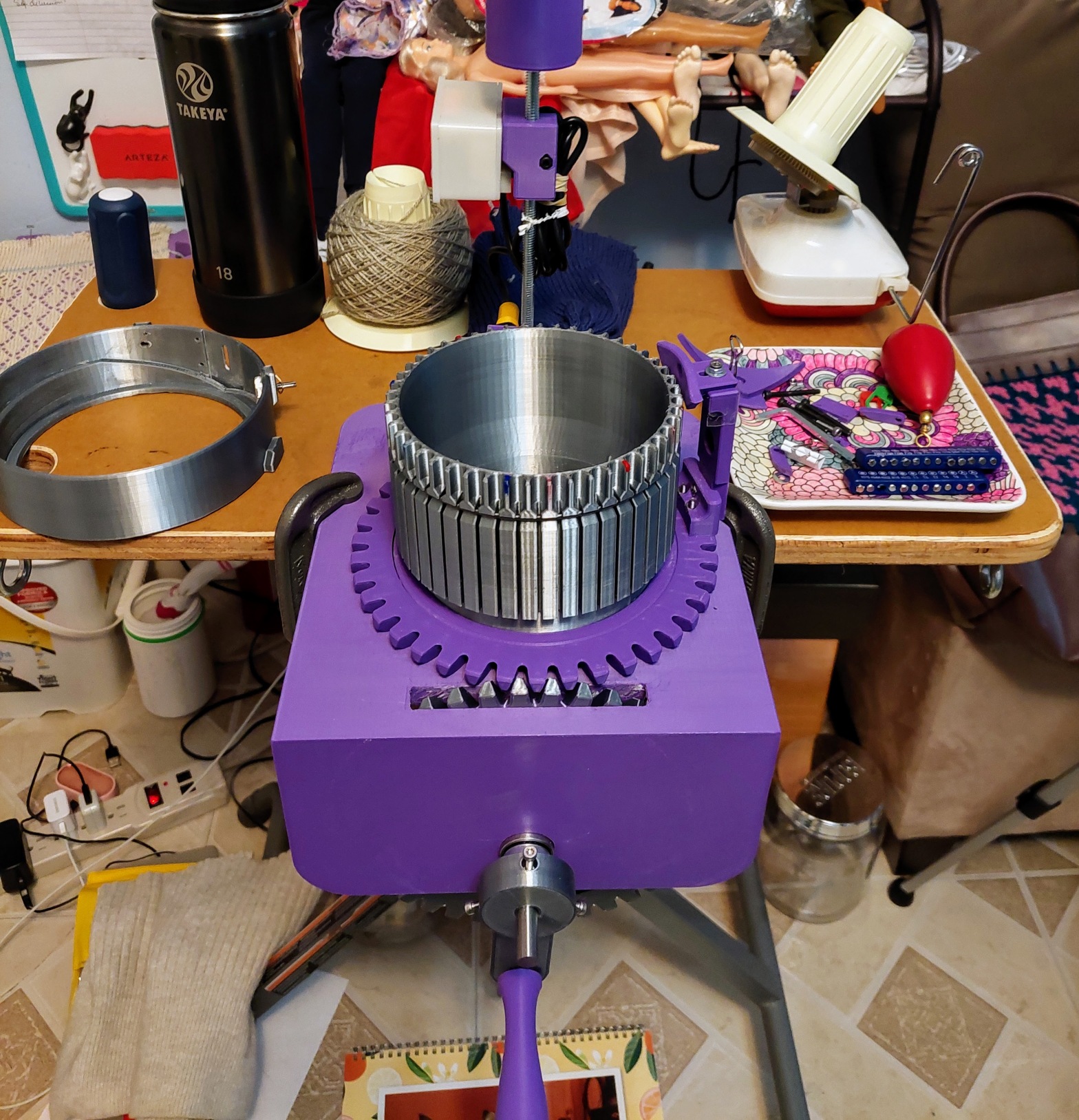INICIO Uno de los primeros videos que publiqué cuando recién empecé mi canal en YouTube fue un tutorial de máquinas tejedoras circulares para hacer calcetas. Aunque aprendí a tejer a dos agujas y en crochet (ganchillo) cuando era muy pequeña, no me obsesioné con estas manualidades hasta que me mudé a los Estados Unidos, yaContinue reading "Cómo Imprimir una Máquina Tejedora en 3D: Mi Experiencia"
Arts & Crafts
What are you good at? I'm very skilled in arts and crafts, especially in fiber and textile work. I have strong experience with knitting—particularly using knitting machines—crochet, weaving, embossing, and mixed media. I enjoy combining traditional techniques with creativity to make unique, handcrafted pieces.
KNITTING RELICS: THE MEDA KNITTING MACHINE
I’ve been away for a while, but now that I’m back, I’m excited to launch a brand-new segment on my blog called—Knitting Relics. In this series, I’ll be showcasing vintage, antique, and collectible knitting machines that are no longer in production. These fascinating tools are a window into the past, and I can’t wait toContinue reading "KNITTING RELICS: THE MEDA KNITTING MACHINE"
Vegan Knitting: Crafting Without Cruelty
I am vegan, and I knit. I became vegan almost four years ago, and I never imagined how drastically my life would change. I didn't become vegan for my own benefit but for the animals. I didn't know the suffering we caused, or maybe I didn't want to know. The truth is that caring aboutContinue reading "Vegan Knitting: Crafting Without Cruelty"
My 3D-Printed CSM
HOME A few years ago I posted a couple of YouTube videos of my new Erlbacher circular sock machine (CSM). I just got it and I was sooo excited. I posted the videos both in English and Spanish. However, I started getting a lot of comments from Latin American viewers asking me where they couldContinue reading "My 3D-Printed CSM"
Brother Ribber KR-830
HOME One of the most important types of knitting is ribbing. Ribbing is used to create elastics for knitted garments. As a hand knitter, I never had the need to learn how to rib on a knitting machine. Although I own several knitting machines, I used to knit cuffs, collars and waistbands by hand. Then,Continue reading "Brother Ribber KR-830"
Cómo usar la cama auxiliar Brother KR-830 para tejido elástico
INICIO Uno de los tipos de tejidos más útiles es el tejido elástico. Desafortunademante, este tipo de tejido es fácil de hacer cuando se teje a dos agujas pero no cuando se teje en máquina tejedora o tricotosa. La única forma de crear este tejido en máquina tejedora es comprando un accesorio adicional. Este accesorioContinue reading "Cómo usar la cama auxiliar Brother KR-830 para tejido elástico"
WHERE TO BUY A HOME KNITTER
Since I started posting videos in YouTube, I have received several comments requesting me to publish the names of the companies where I buy my home knitters. Desde que empecé a publicar videos en YouTube, he recibido muchos comentarios pidiéndome que publique los nombres de las compañías en dónde compro mis máquinas tejedoras.
For The Love of All That is Crafty
HOME I learned to crochet when a I was eight years old and to knit when I was twelve. I kept doing both for the most part, with some hiatus in between. But, it wasn't until my daughter was a toddler that I fully embraced these crafts. At that time I was a single mother,Continue reading "For The Love of All That is Crafty"
Passap Duomatic 80 Knitting Machine
Dear fellow knitters,I have achieved another step in my knitting machine journey. Two months ago I stumbled upon a Passap Duomatic 80 knitting machine. I have always heard knitters refer to this machine as the "Cadillac" of knitting machines. So, I had to see for myself.My mother was a single mother of four children andContinue reading "Passap Duomatic 80 Knitting Machine"


